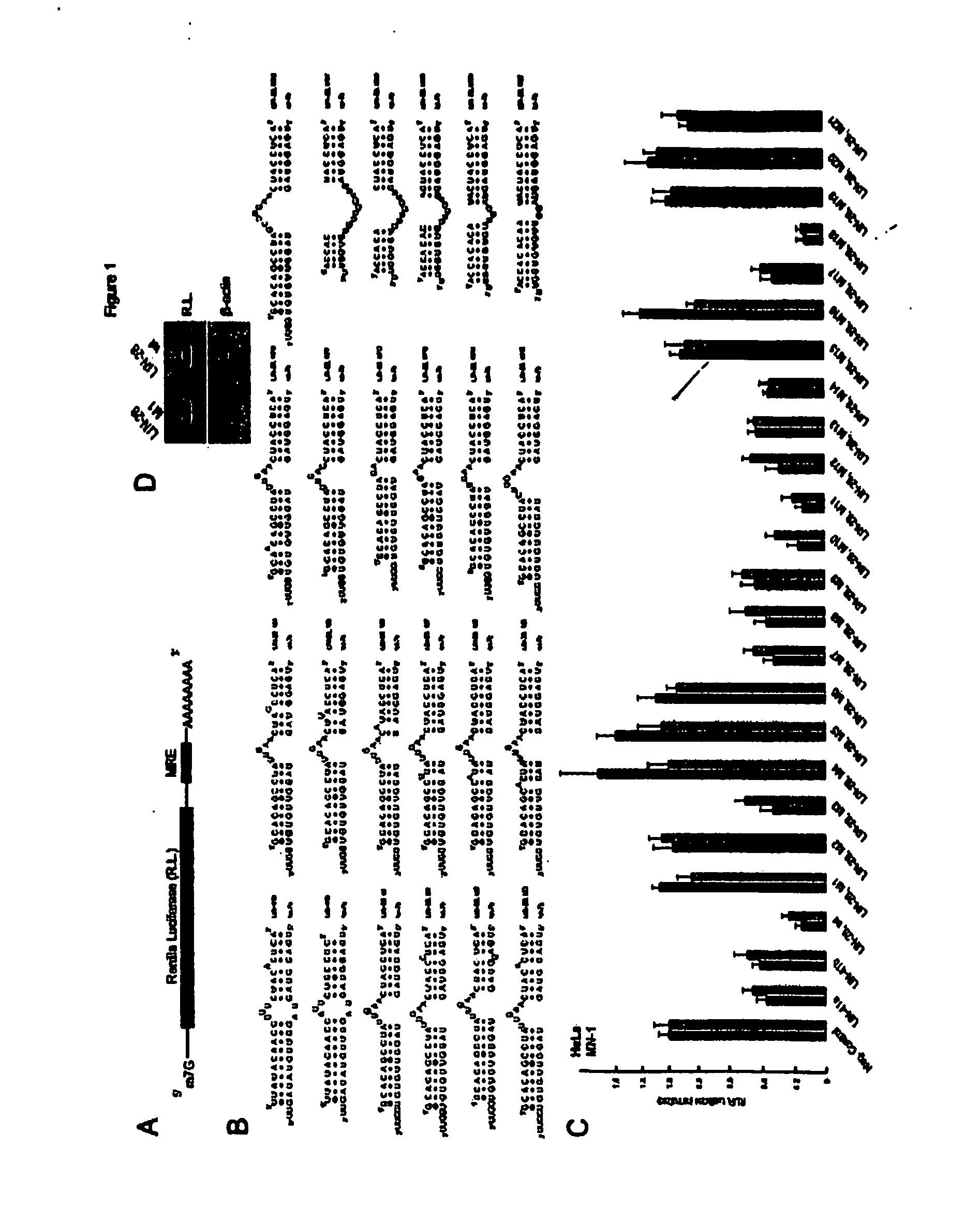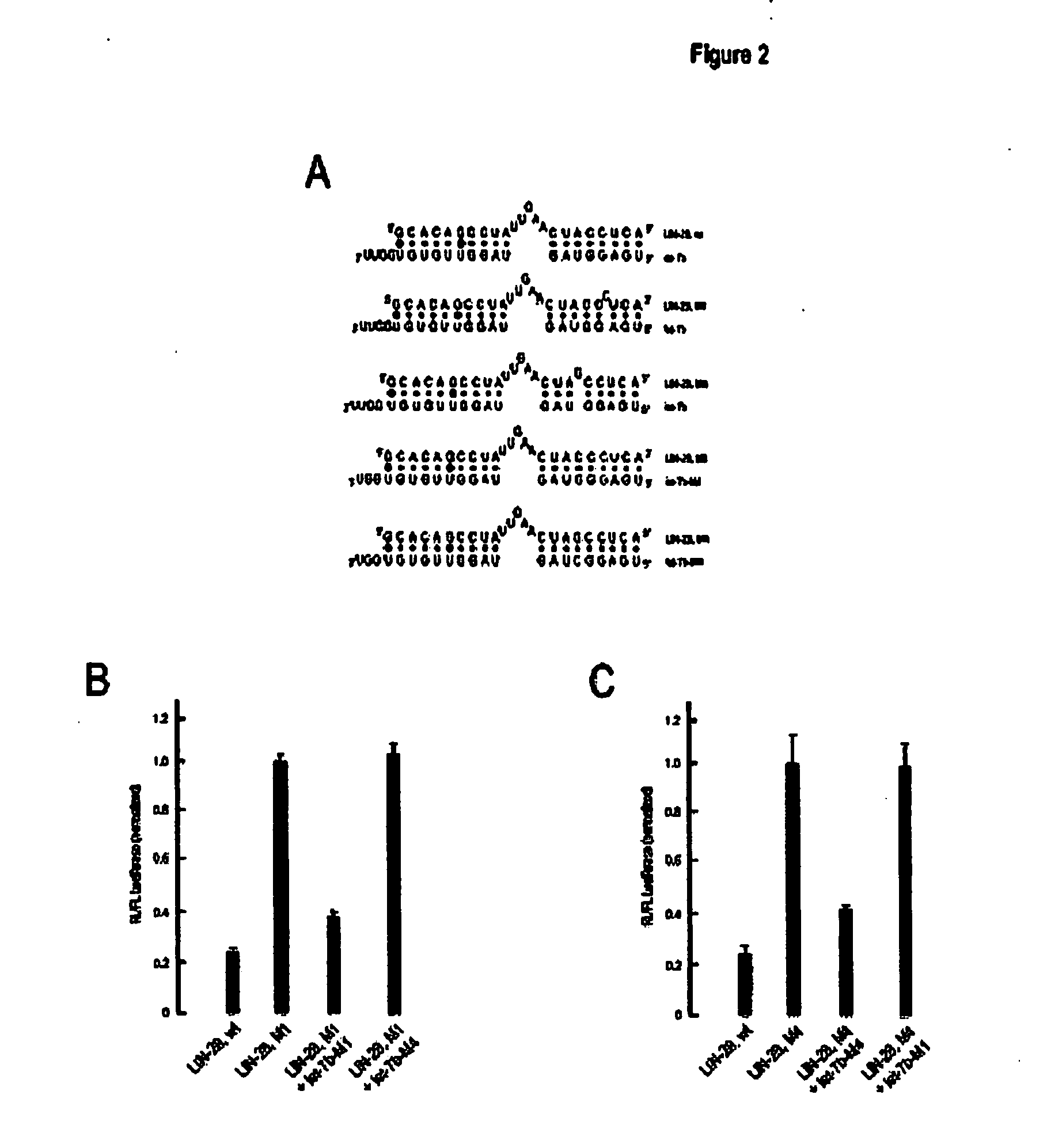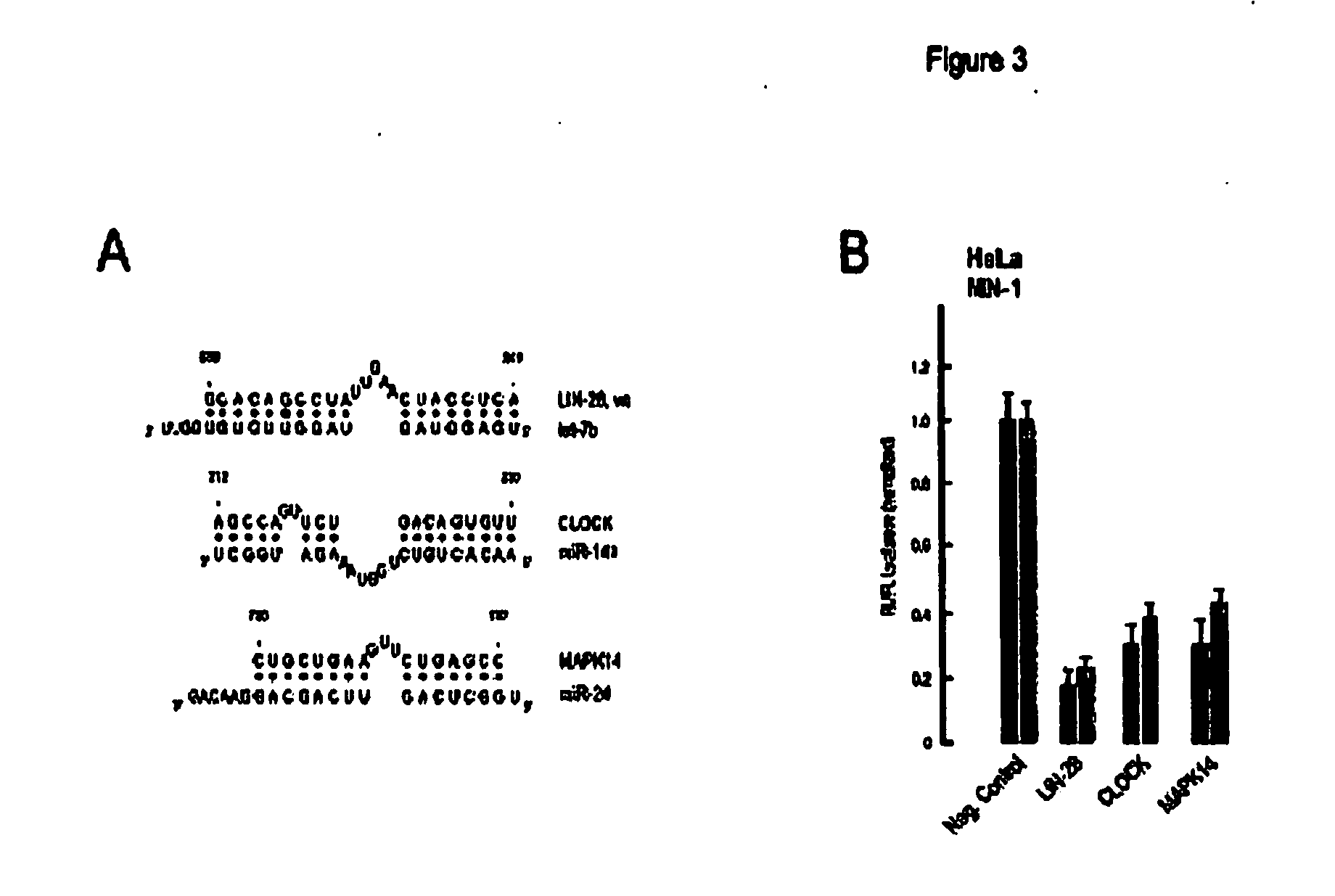Method and systems for identifying micro-rna targets and synthesizing novel micro-rnas and uses of the same
a micro-rna and target technology, applied in the field of micro-rna and micro-rna targets, can solve the problem of missing the prediction of mirna targets containing single mres
- Summary
- Abstract
- Description
- Claims
- Application Information
AI Technical Summary
Benefits of technology
Problems solved by technology
Method used
Image
Examples
example 1
[0068] A new paradigm of gene expression regulation has emerged recently with the discovery of microRNAs, an evolutionarily-conserved class of ˜22 nucleotide (nt) RNAs. miRNAs control gene expression by base pairing with miRNA recognition elements (MREs) found in their messenger RNA (mRNA) targets. Despite a large number of reported miRNAs their mRNA targets remain elusive. Here we use a combined bioinformatics and experimental approach to identify important rules governing miRNA-MRE recognition that allow prediction of human and mouse miRNA targets. We predict mRNA targets for human and mouse miRNAs and provide a strategy to identify mRNA targets for all known miRNAs.
[0069] To search for human miRNA targets we initially employed a bioinformatics approach. We limited our searches to the 3′-UTRs of human mRNAs, extracted from the annotated Reference mRNA Sequences (RefSeq) databaseb (Pruitt et al. 2003), comprising a total of 14,180,360 bases from 16,759 mRNAs. 3′-UTR sequences were...
example 2
Identification of MRE and Generation of miRNA Sequence
[0091] An mRNA sequence is chosen and an MRE is identified using the methods described in the previous methods. An miRNA sequence is generated that satisfies the rules described herein. The miRNA sequence is 22 nucleobases in length and is XX complementary to the mRNA. The miRNA is synthesized and tested for its ability to modulate the expression of the mRNA. The miRNA is found to inhibit the expression of the mRNA.
PUM
| Property | Measurement | Unit |
|---|---|---|
| Interface | aaaaa | aaaaa |
Abstract
Description
Claims
Application Information
 Login to View More
Login to View More - R&D
- Intellectual Property
- Life Sciences
- Materials
- Tech Scout
- Unparalleled Data Quality
- Higher Quality Content
- 60% Fewer Hallucinations
Browse by: Latest US Patents, China's latest patents, Technical Efficacy Thesaurus, Application Domain, Technology Topic, Popular Technical Reports.
© 2025 PatSnap. All rights reserved.Legal|Privacy policy|Modern Slavery Act Transparency Statement|Sitemap|About US| Contact US: help@patsnap.com



